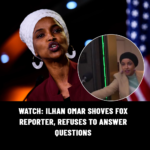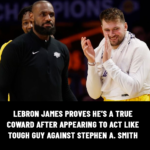Scathing Secret Service report reveals fault for ‘security failures’ at Donald Trump’s July 13 Pennsylvania rally
- Acting head of the agency spoke to ‘deficiencies’ and ‘siloed’ information
The acting head of the Secret Service is calling for a ‘paradigm shift’ after a scathing report detailing cascading failures leading up to the assassination attempt on Donald Trump in Butler, Pennsylvania, on July 13.
The Secret Service ‘has the main responsibility of building the site plan,’ acting director Ronald Rowe told reporters at a briefing in Washington, D.C., on Friday.
‘We need a shift in paradigm in how we conduct our protective operations,’ he said, in one of multiple times he deployed the phrase. ‘The threat level is evolving and requires this paradigm shift.’
Rowe confirmed at the briefing that Trump has had the highest level of the president since the July 13 incident, dismissing a comment by the Palm Beach County sheriff following the second attempt on Trump’s life that he was getting less protection than the current president.

Ronald Rowe Jr., acting director of the U.S. Secret Service, acknowledged ‘communication deficiencies’ the day of the Butler, Pennsylvania rally where Donald Trump was shot. He also called for a ‘paradigm shift’ at the agency
Rowe identified ‘communication deficiencies’ and information that was ‘siloed’ at the Pennsylvania rally.
He pointed to one chilling data point: the Secret Service were not aware of a suspicious individual who entered a building near where Trump was speaking.
‘That vital piece of information was not relayed over the Secret Service radio network,’ Rowe said.
‘The failure of personnel to broadcast via radio the description of the assailant, or vital information received from local law enforcement regarding a suspicious individual on the roof of the AGR complex, to all federal personnel at the Butler site inhibited the collective awareness of all Secret Service personnel,’ the summary of the report details.
That came less than a minute before local law enforcement officers confronted alleged assailant Thomas Matthew Crooks. During a subsequent call, shots rang out.
That means Trump’s own detail didn’t know about the hunt for a suspicious person.
There were other problems, including ‘deficiencies in the advanced planning and implementation by the Secret Service.’
Rowe didn’t just offer bureaucratic language. He said there would be ‘penalties administered’ through a disciplinary process.’
But he said he ‘cannot get into personnel matters as they are proceeding.’
‘There should have been clear direction about what needed to be done’ about the AGR building’ – which the assailant used to take the shot. There should have been ‘better follow through’ about access to the property.
Communication breakdowns with local law enforcement hampered the Secret Service’s performance ahead of a July assassination attempt on former President Donald Trump, according to a new report.
A five-page document summarizing the Secret Service report’s key conclusions finds fault with both local and federal law enforcement, underscoring the cascading and wide-ranging failings that preceded the shooting.
Though the failed response has been well-documented through congressional testimony, news media investigations and other public statements, the report being released on Friday marks the Secret Service’s most formal attempt to catalogue the errors of the day.
It is being released amid fresh scrutiny following Sunday’s arrest in Florida of a man who authorities say wanted to kill Trump.

Rowe fielded questions from reporters on the day of the scathing report
‘It’s important that we hold ourselves to account for the failures of July 13th and that we use the lessons learned to make sure that we do not have another mission failure like this again,’ Rowe added.
The report details a series of ‘communications deficiencies’ before the shooting by 20-year-old Thomas Matthew Crooks.
Law enforcement also communicated vital information outside the Secret Service’s radio frequencies.
As officers searched for Crooks before the shooting, details were being transmitted ‘via mobile/cellular devices in staggered or fragmented fashion’ instead of through the Secret Service’s own network.
That breakdown was especially problematic for Trump’s protective detail, ‘who were not apprised of how focused state and local law enforcement were in the minutes leading up to the attack on locating the suspicious subject’.
Had they known, the report says, they could have made the decision to relocate Trump while the search was in process.
The report raises more serious questions about why no law enforcement were stationed on the roof Crooks climbed onto before opening fire.
A local tactical team was stationed on the second floor of a building in the complex from which Crooks fired.
Multiple law enforcement entities questioned the effectiveness of the team’s position, ‘yet there was no follow-up discussion’ about changing it, the report says.
And there was no discussion with Secret Service about putting a team on the roof, even though snipers from local law enforcement agencies ‘were apparently not opposed to that location’.
The tactical team operating on the second floor of the building had no contact with Secret Service before the rally.

That breakdown was especially problematic for Trump’s protective detail, ‘who were not apprised of how focused state and local law enforcement were in the minutes leading up to the attack on locating the suspicious subject’

Had they known, the report says, they could have made the decision to relocate Trump while the search was in process
That team was brought in by a local police department to help with the event, without Secret Service’s knowledge, the report says.
The Secret Service understood in advance that the rally site, selected by Trump’s staff because it better accommodated the ‘large number of desired attendees’, was a security challenge because of lines of sight that could be exploited by a would-be attacker.
And yet, the report said, no security measures were taken on July 13 to remove those concerns and the Secret Service lacked detailed knowledge about the local law enforcement support that would even be in place.
The report’s executive summary does not identify specific individuals who may be to blame nor does it indicate whether any staff members have been disciplined, though.
The Associated Press has previously reported that at least five Secret Service agents have been placed on modified duty.
The director at the time, Kimberly Cheatle, resigned more than a week after the shooting, saying she took full responsibility for the lapse.





